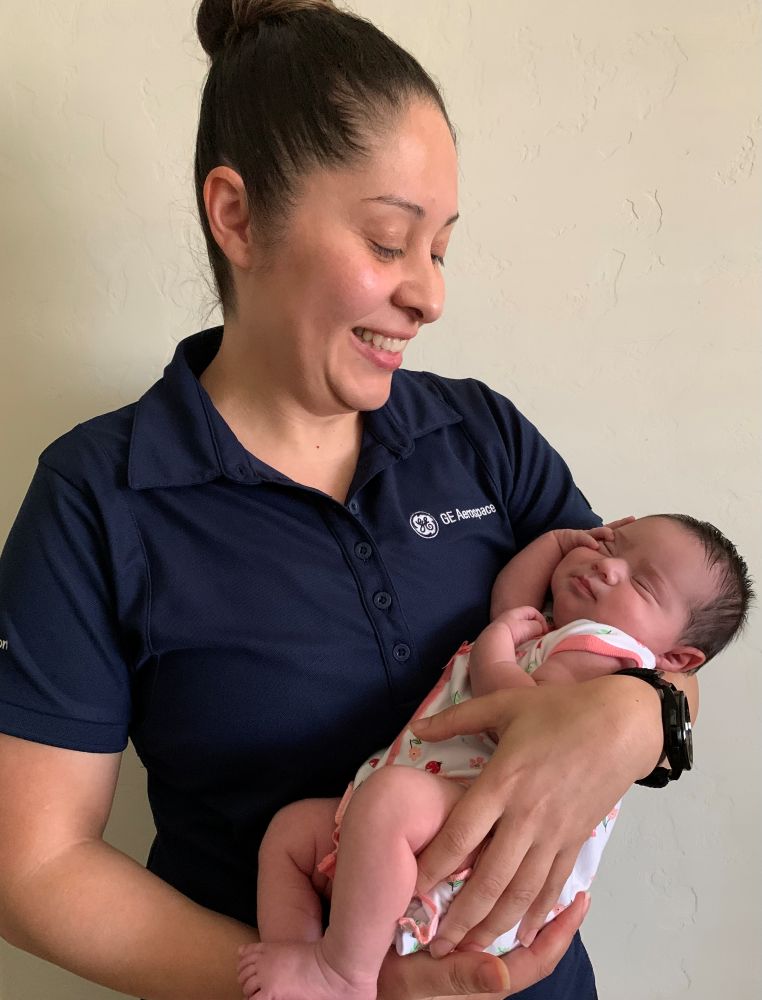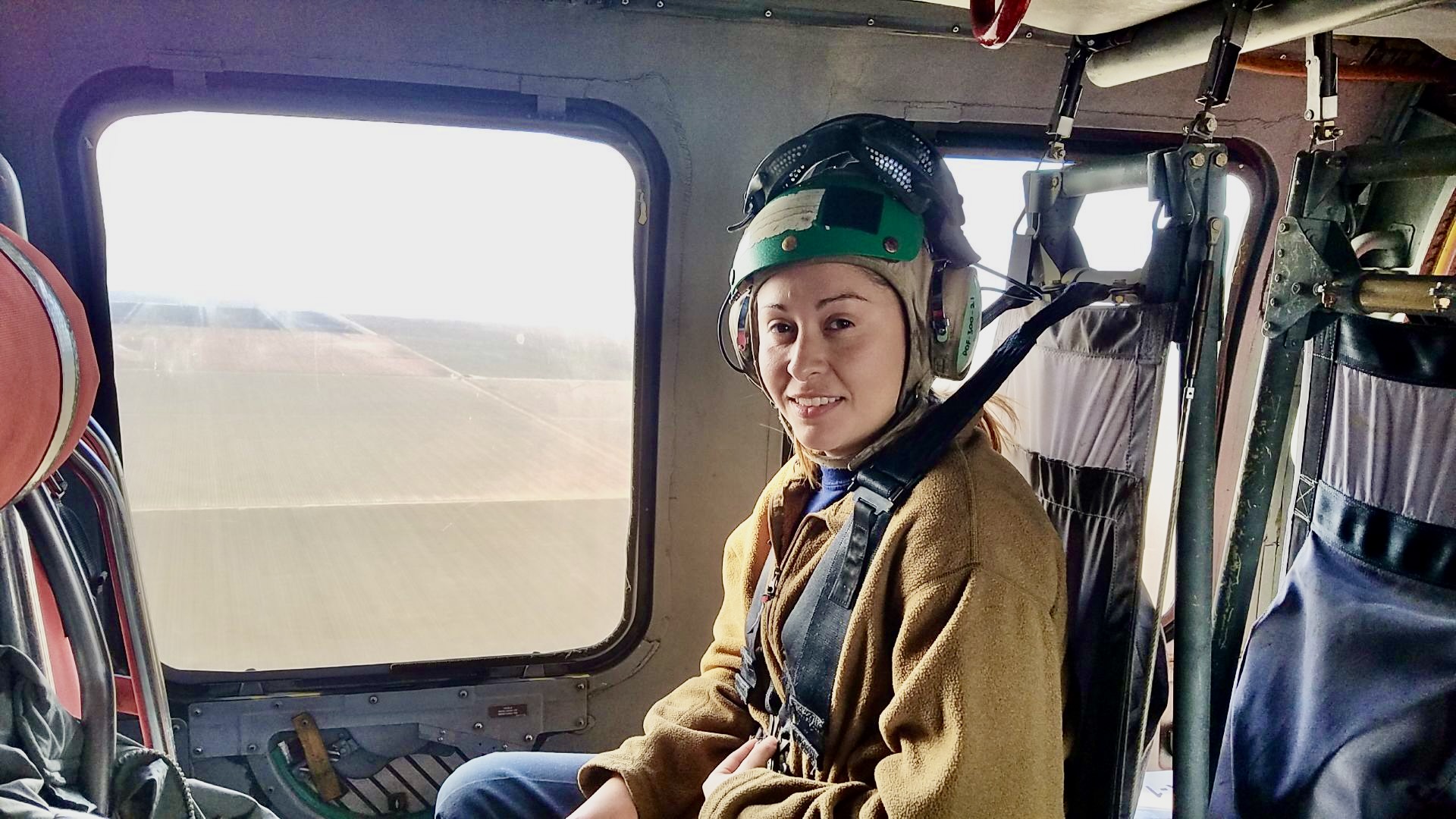Always on Call: Nancy Arevalo Works to Keep T700-Powered Firehawks Flying During Fire Season
July 24, 2025 | by Chris Norris
Few aircraft fly missions that are as stressful — and happen as often — as the Firehawks in the state of California. The modified Sikorsky Black Hawk helicopters that serve state and county fire departments throughout that region must negotiate conditions harsher and more demanding than those of most combat missions, exposing their GE Aerospace T700 engines to everything from heat stress to wildlife collisions — something few people outside their pilots and mechanics know quite as viscerally as Nancy Arevalo. A former U.S. Navy aviation mechanic who has been a field service representative for GE Aerospace’s Defense & Systems division since 2021, Arevalo works directly with the Los Angeles County Fire Department, Cal Fire, and other operators in a part of the U.S. where the annual wildfire season keeps getting longer and more intense.
Case in point: When the Palisades, Eaton, and Hughes fires were engulfing sections of Los Angeles County in flames this past January, the crews that fly and manage the Firehawks were on call 24/7. “I have to say, on my side of the house, it was intense,” Arevalo recalls. “Because right away I knew what was going on.”
“A Lot of Sleepless Nights”
From the moment the first alerts came in, Arevalo began tracking aircraft on radar from her home near Fresno, in Central California, while monitoring communication from her customers. “It was one of those things where I knew that I had operators from L.A. County, Cal Fire, and Orange County Fire out there. [I was] looking at my phone, wondering if and when I’d get a call,” she says. “There are a lot of sleepless nights, because I’m checking my phone constantly making sure I didn’t miss a text or phone call.”
One such call came in over a weekend in mid-January: A Cal Fire Firehawk had just dropped 1,000 gallons of water on a section of the Palisades blaze when it was struck by a giant seagull.
“Luckily, it wasn’t anything worse than that,” Arevalo says. “But it was a pretty huge seagull, and the remains were partially inside the number-two intake.” The concern was, first, whether the bird’s body had blocked the engine enough to cause it to shut down, and then what damage remained from the initial impact. “You have to be absolutely sure there’s no significant damage, because these engines have to perform under tremendous stress,” she says.
The Firehawks flying in Southern California operate at the upper limits of a helicopter’s capacity. Their search and rescue operations take them over terrain ranging from oceans to deserts to mountains, where high altitudes require extra power. And their firefighting missions involve some truly spectacular maneuvers: hovering over a water source as small as a swimming pool, extending a “snorkel” to pump about four tons of water into the tanks in a matter of seconds, then climbing furiously up and tearing off to drop the liquid payload on a blaze. “It is absolutely intense,” Arevalo says. “I’ve witnessed them doing their drops, and it’s a tremendous load on the engine to pick up that much water and then ascend like they do.”
Arevalo learned of the gull strike fairly soon after it happened. “The pilots landed in Ventura, inspected the engine, and then called me,” she recalls. First Arevalo requested photos of the engine — in this case, gory ones — then she asked a maintainer to borescope its interior to check for internal damage. (The borescope had to be transported to Ventura from Cal Fire’s base in Sacramento.)
Once Arevalo had scrutinized the images, she was able to discern no damage to the blades and, after requesting a pressurized engine wash, cleared the Firehawk for duty. “As soon as that wash was completed and they double-checked the engine, the aircraft was back online,” she says.
There’s tremendous pressure during these inspections. “My worry was that the engine was going to be damaged beyond limits and that they’d have to remove it,” Arevalo says. “If blades were bent or chips were taken out, we’d have had to fly a spare engine out from Sacramento, figure out if they had an overhead crane, remove the engine, and install a new one.” All as acres and homes are being consumed.
Constant Contact
According to Arevalo, “In the back of your mind, there’s always a concern that you’re doing the right thing.” She says that the T700’s technical publications, which she follows closely, provide ample peace of mind. “We back up every decision with a publication that specifies the max repairable limit, and the allowable and unallowable limits, and consult with our engineers.”
Arevalo began her career in the Navy as an aviation machinist mate, working on the T700 engines that power Sikorsky MH-60R/S Seahawks. After spending some time as a contractor working on F414 engines, which power the Navy’s F/A-18 Super Hornet fighters, returning to Firehawks felt like coming home. Today she’s GE Aerospace’s field service rep for a large swath of California, from Red Bluff to San Diego — “essentially the public use operators in California, and some in Colorado,” she says. Which in the Los Angeles County area alone equates to covering roughly 4,100 square miles and more than 20 million people.
As climate change extends the fire season, it also cuts into their scheduled downtime for Firehawk maintenance. This puts reps like Arevalo in constant contact with aircraft maintainers — so much so that she recently found herself fielding a work call while supporting her sister, who had just gone into labor.

“I’m holding my sister’s leg, the phone dings in my back pocket, I wait for a contraction to end and check the message,” she says with a laugh. “The maintainer was reassembling an engine and wanted help locating a couple of bolt part numbers. I wanted him to know I received his message and asked, ‘Is this urgent?’ He was like, ‘No, no, no!’”
Once the baby was born, Arevalo reached back out to the maintainer with the answer. Another problem solved.
